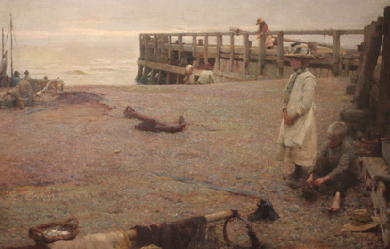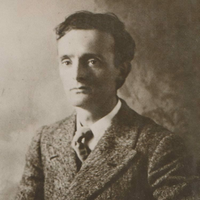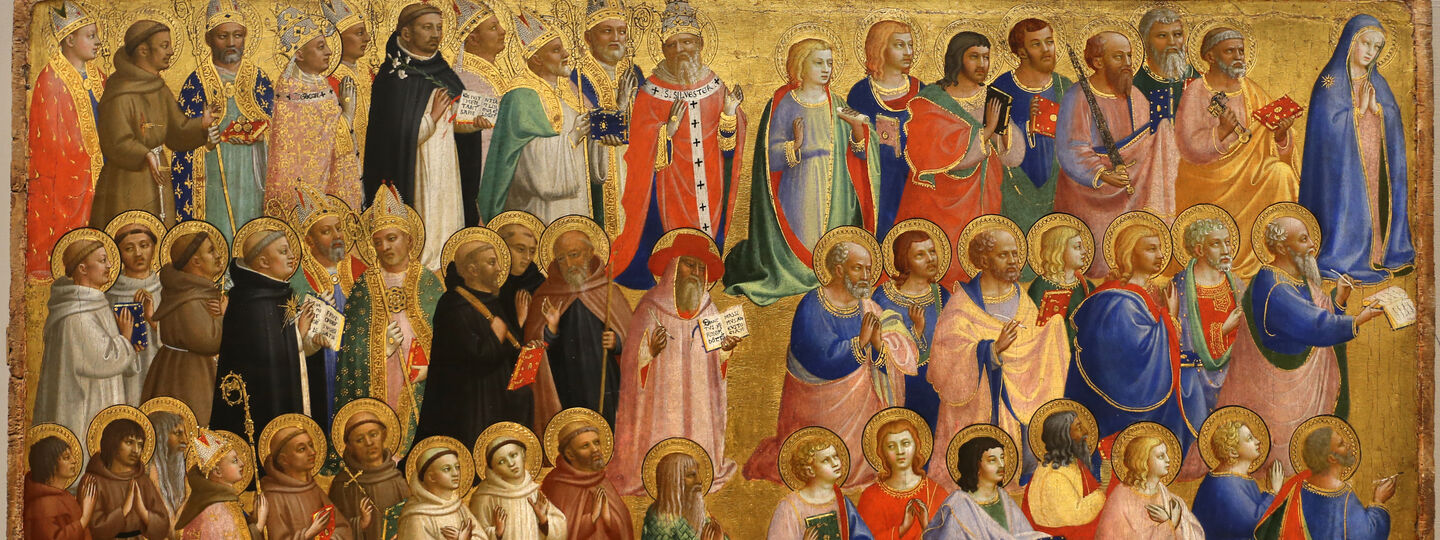
Info
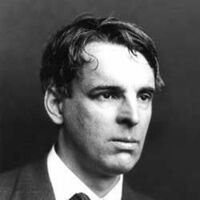
William Butler Yeats (13 June 1865 – 28 January 1939) was an Irish poet and one of the foremost figures of 20th-century literature. A pillar of the Irish literary establishment, he helped to found the Abbey Theatre, and in his later years served two terms as a Senator of the Irish Free State. He was a driving force behind the Irish Literary Revival along with Lady Gregory, Edward Martyn and others. Yeats was born in Sandymount, Ireland and educated there and in London. He spent childhood holidays in County Sligo and studied poetry from an early age when he became fascinated by Irish legends and the occult. These topics feature in the first phase of his work, which lasted roughly until the turn of the 20th century. His earliest volume of verse was published in 1889, and its slow-paced and lyrical poems display debts to Edmund Spenser, Percy Bysshe Shelley, and the poets of the Pre-Raphaelite Brotherhood. From 1900, his poetry grew more physical and realistic. He largely renounced the transcendental beliefs of his youth, though he remained preoccupied with physical and spiritual masks, as well as with cyclical theories of life. In 1923, he was awarded the Nobel Prize in Literature.
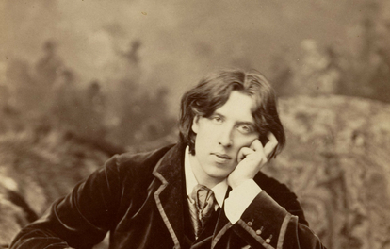
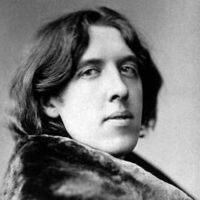
Oscar Fingal O'Flahertie Wills Wilde (16 October 1854 – 30 November 1900) was an Irish writer and poet. After writing in different forms throughout the 1880s, he became one of London's most popular playwrights in the early 1890s. Today he is remembered for his epigrams, plays and the circumstances of his imprisonment, followed by his early death. At the turn of the 1890s, he refined his ideas about the supremacy of art in a series of dialogues and essays, and incorporated themes of decadence, duplicity, and beauty into his only novel, The Picture of Dorian Gray (1890). The opportunity to construct aesthetic details precisely, and combine them with larger social themes, drew Wilde to write drama. He wrote Salome (1891) in French in Paris but it was refused a licence. Unperturbed, Wilde produced four society comedies in the early 1890s, which made him one of the most successful playwrights of late Victorian London.
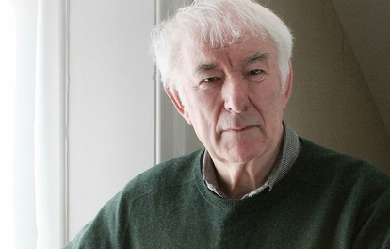
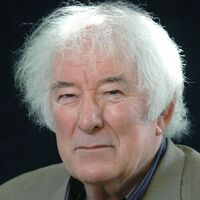
Seamus Justin Heaney (13 April 1939 – 30 August 2013) was an Irish poet, playwright and translator. He received the 1995 Nobel Prize in Literature. Among his best-known works is Death of a Naturalist (1966), his first major published volume. Heaney was and is still recognised as one of the principal contributors to poetry in Ireland during his lifetime. American poet Robert Lowell described him as “the most important Irish poet since Yeats”, and many others, including the academic John Sutherland, have said that he was “the greatest poet of our age”. Robert Pinsky has stated that “with his wonderful gift of eye and ear Heaney has the gift of the story-teller.” Upon his death in 2013, The Independent described him as “probably the best-known poet in the world”.
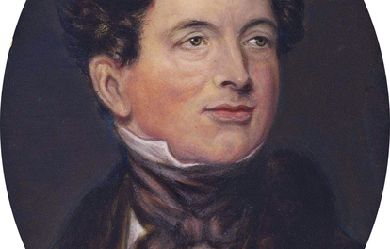
.jpeg?locale=es)
Thomas Moore (28 May 1779 – 25 February 1852), also known as Tom Moore, was an Irish writer, poet, and lyricist celebrated for his Irish Melodies. His setting of English-language verse to old Irish tunes marked the transition in popular Irish culture from Irish to English. Politically, Moore was recognised in England as a press, or "squib", writer for the aristocratic Whigs; in Ireland he was accounted a Catholic patriot.
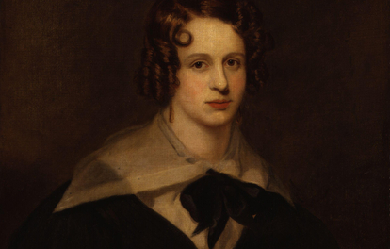
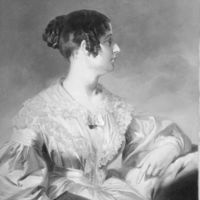
Felicia Dorothea Hemans (25 September 1793 – 16 May 1835) was an English poet. Her first poems, dedicated to the Prince of Wales, were published in Liverpool in 1808, when she was fourteen, arousing the interest of poet Percy Bysshe Shelley, who briefly corresponded with her. She quickly followed them up with “England and Spain” (1808) and “The Domestic Affections” (1812).
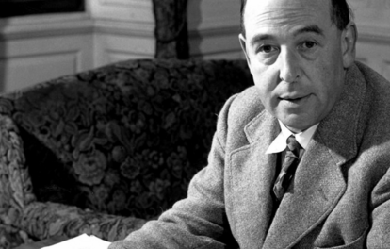
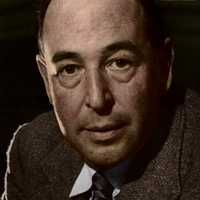
Clive Staples Lewis (29 November 1898 – 22 November 1963), commonly called C. S. Lewis and known to his friends and family as “Jack”, was a novelist, poet, academic, medievalist, literary critic, essayist, lay theologian, and Christian apologist. Born in Belfast, Ireland, he held academic positions at both Oxford University (Magdalen College), 1925–1954, and Cambridge University (Magdalene College), 1954–1963. He is best known both for his fictional work, especially The Screwtape Letters, The Chronicles of Narnia, and The Space Trilogy, and for his non-fiction Christian apologetics, such as Mere Christianity, Miracles, and The Problem of Pain. Lewis and fellow novelist J. R. R. Tolkien were close friends. Both authors served on the English faculty at Oxford University, and both were active in the informal Oxford literary group known as the “Inklings”. According to his memoir Surprised by Joy, Lewis had been baptized in the Church of Ireland (part of the Anglican Communion) at birth, but fell away from his faith during his adolescence. Owing to the influence of Tolkien and other friends, at the age of 32 Lewis returned to the Anglican Communion, becoming “a very ordinary layman of the Church of England”. His faith had a profound effect on his work, and his wartime radio broadcasts on the subject of Christianity brought him wide acclaim.
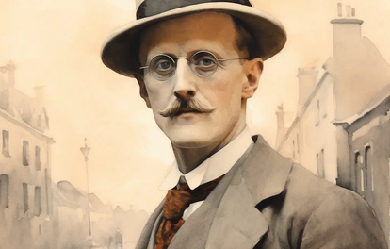
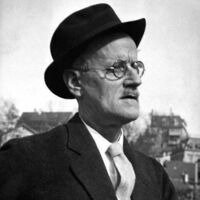
James Augustine Aloysius Joyce (2 February 1882 – 13 January 1941) was an Irish novelist and poet, considered to be one of the most influential writers in the modernist avant-garde of the early 20th century. Joyce is best known for Ulysses (1922), a landmark work in which the episodes of Homer's Odyssey are paralleled in an array of contrasting literary styles, perhaps most prominently the stream of consciousness technique he perfected. Other major works are the short-story collection Dubliners (1914), and the novels A Portrait of the Artist as a Young Man (1916) and Finnegans Wake (1939). His complete oeuvre includes three books of poetry, a play, occasional journalism, and his published letters.
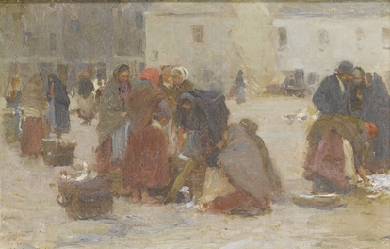
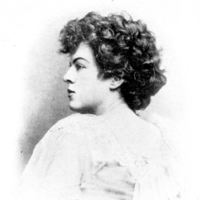
Dora Maria Sigerson Shorter (16 August 1866– 6 January 1918) was an Irish poet and sculptor, who after her marriage in 1895 wrote under the name Dora Sigerson Shorter. She was born in Dublin, Ireland, the daughter of George Sigerson, a surgeon and writer, and Hester (née Varian), also a writer. She was a major figure of the Irish Literary Revival, publishing many collections of poetry from 1893. Her friends included Katharine Tynan, Rose Kavanagh and Alice Furlong, writers and poets. In 1895 she married Clement King Shorter, an English journalist and literary critic. They lived together in London, until her death at age 51 from undisclosed causes.
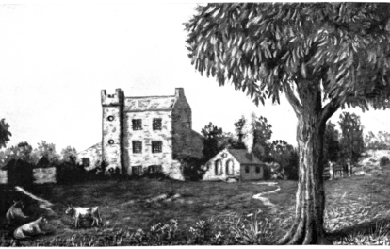
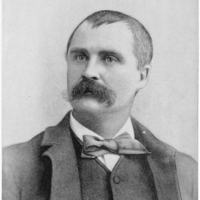
John Boyle O’Reilly (28 June 1844–10 August 1890) was an Irish-born poet, journalist and fiction writer. As a youth in Ireland, he was a member of the Irish Republican Brotherhood, or Fenians, for which he was transported to Western Australia. After escaping to the United States, he became a prominent spokesperson for the Irish community and culture, through his editorship of the Boston newspaper The Pilot, his prolific writing, and his lecture tours.
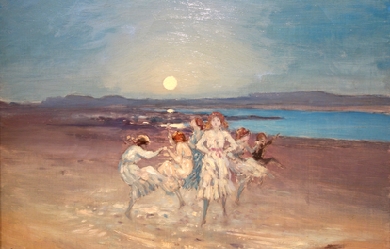
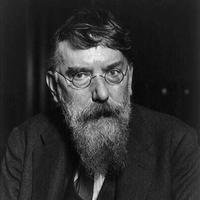
George William Russell (10 April 1867– 17 July 1935) who wrote with the pseudonym Æ (sometimes written AE or A.E.), was an Irish writer, editor, critic, poet, artistic painter and Irish nationalist. He was also a writer on mysticism, and a central personage in the group of devotees of theosophy which met in Dublin for many years.
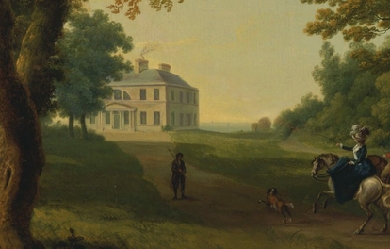
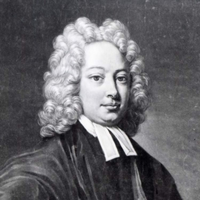
Thomas Parnell (11 September 1679– 24 October 1718) was an Anglo-Irish poet and clergyman who was a friend of both Alexander Pope and Jonathan Swift. He was the son of Thomas Parnell of Maryborough, Queen’s County (now Port Laoise, County Laoise), a prosperous landowner who had been a loyal supporter of Cromwell during the English Civil War and moved to Ireland after the restoration of the monarchy. Thomas was educated at Trinity College, Dublin and collated archdeacon of Clogher in 1705. He however spent much of his time in London, where he participated with Pope, Swift and others in the Scriblerus Club, contributing to The Spectator and aiding Pope in his translation of The Iliad. He was also one of the so-called “Graveyard poets”: his ‘A Night-Piece on Death,’ widely considered the first “Graveyard School” poem, was published posthumously in Poems on Several Occasions, collected and edited by Alexander Pope and is thought by some scholars to have been published in December of 1721 (although dated in 1722 on its title page, the year accepted by The Concise Oxford Chronology of English Literature; see 1721 in poetry, 1722 in poetry). It is said of his poetry 'it was in keeping with his character, easy and pleasing, enunciating the common places with felicity and grace. He died in Chester in 1718 on his way home to Ireland. His wife and children having died, his Laoise estate passed to his brother John, a judge and MP in the Irish House of Commons and the ancestor of Charles Stewart Parnell. Oliver Goldsmith wrote a biography of Parnell which often accompanied later editions of Parnell’s works. Works * Essay on the Different Stiles of Poetry (1713) * Battle of the Frogs and Mice (1717 translation in heroic couplets of a comic epic then attributed to Homer) * An example of his poetry is the opening stanza of his poem The Hermit References Wikipedia—https://en.wikipedia.org/wiki/Thomas_Parnell
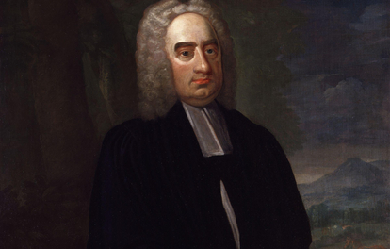
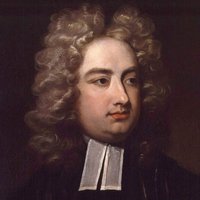
Jonathan Swift (30 November 1667– 19 October 1745) was an Anglo-Irish satirist, essayist, political pamphleteer (first for the Whigs, then for the Tories), poet and cleric who became Dean of St Patrick’s Cathedral, Dublin. Swift is remembered for works such as Gulliver’s Travels, A Modest Proposal, A Journal to Stella, Drapier’s Letters, The Battle of the Books, An Argument Against Abolishing Christianity and A Tale of a Tub. He is regarded by the Encyclopædia Britannica as the foremost prose satirist in the English language, and is less well known for his poetry.
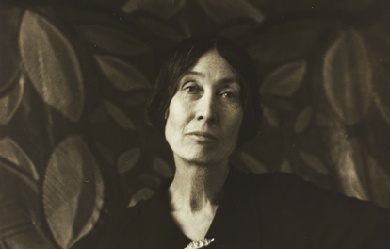
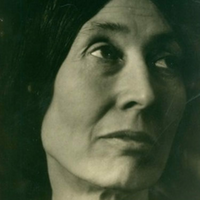
Lola Ridge, born Rose Emily Ridge (12 December 1873 Dublin—19 May 1941 Brooklyn) was an Irish-American anarchist poet and an influential editor of avant-garde, feminist, and Marxist publications. She is best remembered for her long poems and poetic sequences, published in numerous magazines and collected in five books of poetry. Along with other political poets of the early Modernist period, Ridge has received renewed critical attention since the beginning of the 21st century and is praised for making poetry directly from harsh urban life. A new selection of her poetry was published in 2007 and a biography in 2016.
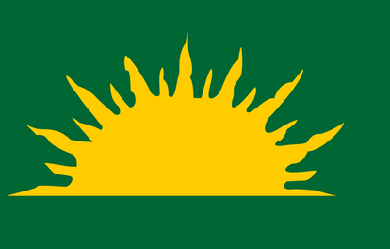
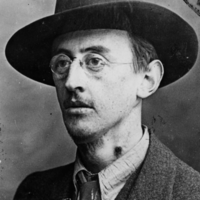
Joseph Mary Plunkett (Irish: Seosamh Máire Pluincéid, 21 November 1887– 12 May 1916) was an Irish nationalist, poet, journalist, and a leader of the 1916 Easter Rising. He was born at 26 Upper Fitzwilliam Street in one of Dublin’s most affluent neighbourhoods. Both his parents came from wealthy backgrounds, and his father, George Noble Plunkett, had been made a papal count. Despite being born into a life of privilege, young Joe Plunkett did not have an easy childhood.
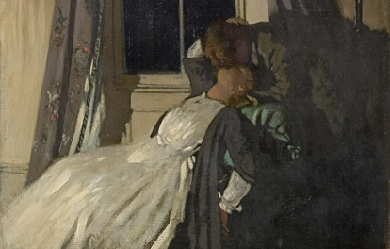
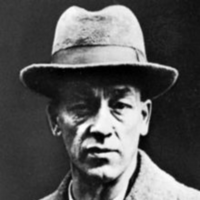
James Stephens (9 February 1880– 26 December 1950) was an Irish novelist and poet. He produced many retellings of Irish myths and fairy tales. His retellings are marked by a rare combination of humour and lyricism (Deirdre, and Irish Fairy Tales are often especially praised). He also wrote several original novels (The Crock of Gold, Etched in Moonlight, Demi-Gods) based loosely on Irish fairy tales. The Crock of Gold in particular has achieved enduring popularity and has often been reprinted.
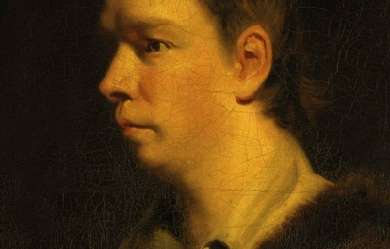

Oliver Goldsmith (10 November 1728– 4 April 1774) was an Irish novelist, playwright and poet, who is best known for his novel The Vicar of Wakefield (1766), his pastoral poem The Deserted Village (1770), and his plays The Good-Natur’d Man (1768) and She Stoops to Conquer (1771, first performed in 1773). He is thought to have written the classic children’s tale The History of Little Goody Two-Shoes (1765). Biography Goldsmith’s birth date and year are not known with certainty. According to the Library of Congress authority file, he told a biographer that he was born on 10 November 1728. The location of his birthplace is also uncertain. He was born either in the townland of Pallas, near Ballymahon, County Longford, Ireland, where his father was the Anglican curate of the parish of Forgney, or at the residence of his maternal grandparents, at the Smith Hill House in the diocese of Elphin, County Roscommon where his grandfather Oliver Jones was a clergyman and master of the Elphin diocesan school, and where Oliver studied. When Goldsmith was two years old, his father was appointed the rector of the parish of “Kilkenny West” in County Westmeath. The family moved to the parsonage at Lissoy, between Athlone and Ballymahon, and continued to live there until his father’s death in 1747. In 1744 Goldsmith went up to Trinity College, Dublin. His tutor was Theaker Wilder. Neglecting his studies in theology and law, he fell to the bottom of his class. In 1747, along with four other undergraduates, he was expelled for a riot in which they attempted to storm the Marshalsea Prison. He was graduated in 1749 as a Bachelor of Arts, but without the discipline or distinction that might have gained him entry to a profession in the church or the law; his education seemed to have given him mainly a taste for fine clothes, playing cards, singing Irish airs and playing the flute. He lived for a short time with his mother, tried various professions without success, studied medicine desultorily at the University of Edinburgh from 1752 to 1755, and set out on a walking tour of Flanders, France, Switzerland and Northern Italy, living by his wits (busking with his flute). He settled in London in 1756, where he briefly held various jobs, including an apothecary’s assistant and an usher of a school. Perennially in debt and addicted to gambling, Goldsmith produced a massive output as a hack writer for the publishers of London, but his few painstaking works earned him the company of Samuel Johnson, with whom he was a founding member of “The Club”. There, through fellow Club member Edmund Burke, he made the acquaintance of Sir George Savile, who would later arrange a job for him at Thornhill Grammar School. The combination of his literary work and his dissolute lifestyle led Horace Walpole to give him the epithet inspired idiot. During this period he used the pseudonym “James Willington” (the name of a fellow student at Trinity) to publish his 1758 translation of the autobiography of the Huguenot Jean Marteilhe. Goldsmith was described by contemporaries as prone to envy, a congenial but impetuous and disorganised personality who once planned to emigrate to America but failed because he missed his ship. At some point around this time he worked at Thornhill Grammar School, later basing Squire Thornhill (in the Vicar of Wakefield) on his benefactor Sir George Savile and certainly spending time with eminent scientist Rev. John Mitchell, who he probably knew from London. Mitchell, sorely missed good company, which Goldsmith naturally provided in spades.Thomas De Quincey wrote of him 'All the motion of Goldsmith’s nature moved in the direction of the true, the natural, the sweet, the gentle’. His premature death in 1774 may have been partly due to his own misdiagnosis of his kidney infection. Goldsmith was buried in Temple Church in London. The inscription reads; "HERE LIES/OLIVER GOLDSMITH". There is a monument to him in the centre of Ballymahon, also in Westminster Abbey with an epitaph written by Samuel Johnson. Works * See The Vicar of Wakefield, The Good-Natur’d Man, The Traveller, and She Stoops to Conquer. The Citizen of the World * In 1760 Goldsmith began to publish a series of letters in the Public Ledger under the title The Citizen of the World. Purportedly written by a Chinese traveller in England by the name of Lien Chi, they used this fictional outsider’s perspective to comment ironically and at times moralistically on British society and manners. It was inspired by the earlier essay series Persian Letters by Charles de Secondat, Baron de Montesquieu. The Hermit * Goldsmith wrote this romantic ballad of precisely 160 lines in 1765. The hero and heroine are Edwin, a youth without wealth or power, and Angelina, the daughter of a lord “beside the Tyne.” Angelina spurns many wooers, but refuses to make plain her love for young Edwin. “Quite dejected with my scorn,” Edwin disappears and becomes a hermit. One day, Angelina turns up at his cell in boy’s clothes and, not recognising him, tells him her story. Edwin then reveals his true identity, and the lovers never part again. The poem is notable for its interesting portrayal of a hermit, who is fond of the natural world and his wilderness solitude but maintains a gentle, sympathetic demeanor toward other people. In keeping with eremitical tradition, however, Edwin the Hermit claims to "spurn the [opposite] sex." This poem appears under the title of “A Ballad” sung by the character of Mr. Burchell in Chapter 8 of Goldsmith’s novel, The Vicar of Wakefield. The Deserted Village * In the 1760s Goldsmith witnessed the demolition of an ancient village and destruction of its farms to clear land to become a wealthy man’s garden. His poem The Deserted Village, published in 1770, expresses a fear that the destruction of villages and the conversion of land from productive agriculture to ornamental landscape gardens would ruin the peasantry. Other works * The Complete Poetical Works of Oliver Goldsmith (ed) Austin Dobson, 1887, kindle ebook March 2011 ASIN B004TP31VM * The ironic poem, An Elegy on the Death of a Mad Dog was published in 1766. * A History of the Earth and Animated Nature (1774) * Goldsmith is also thought to have written the classic children’s tale The History of Little Goody Two-Shoes. Memorials concerning Oliver Goldsmith * Goldsmith lived in Kingsbury, now in North-West London between 1771 and 1774 and Oliver Goldsmith Primary School and Goldsmith Lane there are named after him. * The Oliver Goldsmith Summer School is held every June Bank Holiday at Ballymahon with poetry and creative readings being held at Goldsmith’s birthplace in nearby Pallas, Forgney. * In the play Marx in Soho by Howard Zinn, Marx makes a reference to Goldsmiths’ poem, The Deserted Village. * A statue of him by JH Foley stands at the Front Arch of Trinity College, Dublin (see image). * A statue of him stands in a limestone cell at the ruin of his birthplace in Pallas, Forgney, Ballymahon, County Longford. The statue is a copy of the Foley statue that stands outside Trinity college Dublin and is the focus point of the annual Oliver Goldsmith Summer School. * His name has been given to a new lecture theatre and student accommodation on the Trinity College campus: Goldsmith Hall. * Somerset Maugham used the last line from An Elegy on the Death of a Mad Dog in his novel The Painted Veil (1925). The character Walter Fane’s last words are The dog it was that died. * Auburn, Alabama, and Auburn University were named for the first line in Goldsmith’s poem: “Sweet Auburn, loveliest village of the plain.” Auburn is still referred to as the ‘loveliest village on the plain.’ * There is a statue in Ballymahon County Longford outside the town library by Irish Sculptor Éamonn O’ Doherty (1939 - 2011)which was unveiled in 1999. * London Underground locomotive number 16 (used on the Metropolitan line of the London Underground until 1962) was named Oliver Goldsmith. * Longford based band Goldsmith are named after the famous writer. * Athlone Institute of Technology library is named the Goldsmith Library In popular culture * Two characters in the 1951 comedy The Lavender Hill Mob quote the same line from Goldsmith’s poem “The Traveller”– a subtle joke, because the film’s plot involves the recasting of stolen gold. * During the opening credits of the SKY One adaptation of Sir Terry Pratchett’s Christmas story “The Hogfather”, a portrait of Goldsmith is shown as part of a hall of memorials to those “exhumed” by the “Ankh-Morpork Assassins’ Guild”. References Wikipedia—https://en.wikipedia.org/wiki/Oliver_Goldsmith
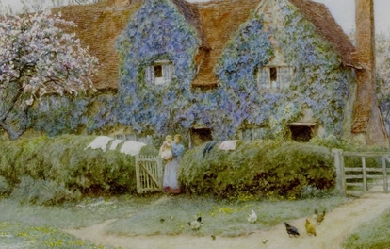
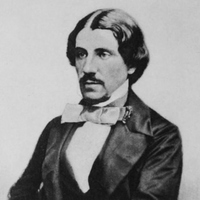
William Allingham (19 March 1824– 18 November 1889) was an Irish poet, diarist and editor. He wrote several volumes of lyric verse, and his poem 'The Faeries’ was much anthologised; but he is better known for his posthumously published Diary, in which he records his lively encounters with Tennyson, Carlyle and other writers and artists. His wife, Helen Allingham, was a well-known water-colorist and illustrator. Biography William Allingham was born on 19 March 1824 in the little port of Ballyshannon, County Donegal, Ireland, and was the son of the manager of a local bank who was of English descent. His younger brothers and sisters were Catherine (b. 1826), John (b. 1827), Jane (b. 1829), Edward (b. 1831; who lived only a few months) and a still-born brother (b. 1833). During his childhood his parents moved twice within the town, where the boy enjoyed the country sights and gardens, learned to paint and listened to his mother’s piano-playing. When he was nine, his mother died. He obtained a post in the custom-house of his native town, and held several similar posts in Ireland and England until 1870. During this period were published his Poems (1850; which included his well-known poem, 'The Fairies’) and Day and Night Songs (1855; illustrated by Dante Gabriel Rossetti and others). (Rossetti’s Letters to Allingham (1854–1870), edited by Dr. Birkbeck Hill, would be published in 1897.) Lawrence Bloomfield in Ireland, his most ambitious, though not his most successful work, a narrative poem illustrative of Irish social questions, appeared in 1864. He also edited The Ballad Book for the Golden Treasury series in 1864, and Fifty Modern Poems in 1865. In April 1870 Allingham retired from the customs service, moved to London and became sub-editor of Fraser’s Magazine, eventually becoming editor in succession to James Froude in June 1874– a post he would hold till 1879. On 22 August 1874 he married the illustrator, Helen Paterson, who was twenty-four years younger than he. His wife gave up her work as an illustrator and would become well known under her married name as a water-colour painter. At first the couple lived in London, at 12 Trafalgar Square, Chelsea, near Allingham’s friend, Thomas Carlyle, and it was there that they had their first two children– Gerald Carlyle (b. 1875 November) and Eva Margaret (b. 1877 February). In 1877 appeared Allingham’s Songs, Poems and Ballads. In 1881, after the death of Carlyle, the Allinghams moved to Sandhills near Witley in Surrey, where their third child, Henry William, was born in 1882. At this period Allingham published Evil May Day (1883), Blackberries (1884) and Irish Songs and Poems (1887). In 1888, because of William’s declining health, they moved back to the capital, to the heights of Hampstead village. But in 1889, on 18 November, William died at Hampstead. According to his wishes he was cremated. His ashes are interred at St. Anne’s church in his native Ballyshannon. Posthumously Allingham’s Varieties in Prose was published in 1893. William Allingham A Diary, edited by Mrs Helen Allingham and D. Radford, was published in 1907. It contains Allingham’s reminiscences of Alfred Tennyson, Thomas Carlyle and other writers and artists. Assessment and influence Working on an un-ostentatious scale, Allingham produced much lyrical and descriptive poetry, and the best of his pieces are thoroughly national in spirit and local colouring. His verse is clear, fresh, and graceful. His best-known poem remains his early work, “The Faeries”. Allingham had a substantial influence on W. B. Yeats; while the Ulster poet John Hewitt felt Allingham’s impact keenly, and attempted to revive his reputation by editing, and writing an introduction to, The Poems of William Allingham (Oxford University Press/ Dolmen Press, 1967). Allingham’s wide-ranging anthology of poetry, Nightingale Valley (1862) was to be the inspiration for the 1923 collection Come Hither by Walter de la Mare. We daren’t go a-hunting/For fear of little men... was quoted by the character of The Tinker near the beginning of the movie Willy Wonka & the Chocolate Factory, as well as in Mike Mignola’s comic book short story Hellboy: The Corpse, plus the 1973 horror film Don’t Look in the Basement. Several lines of the poem are quoted by Henry Flyte, a character in issue No. 65 of the Supergirl comic book, August 2011. This same poem was quoted in Andre Norton’s 1990 science fiction novel Dare To Go A-Hunting (ISBN 0-812-54712-8). Up the Airy Mountain is the title of a short story by Debra Doyle and James D. Macdonald; while the working title of Terry Pratchett’s The Wee Free Men was “For Fear of Little Men”. The Allingham Arms Hotel in Bundoran, Co. Donegal is named after him. References Wikipedia—https://en.wikipedia.org/wiki/William_Allingham
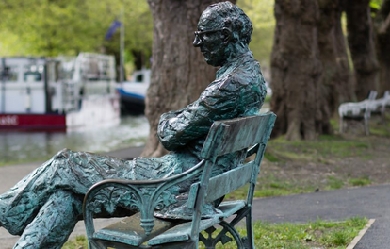
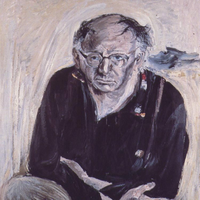
Patrick Kavanagh (21 October 1904– 30 November 1967) was an Irish poet and novelist. His best-known works include the novel Tarry Flynn, and the poems “On Raglan Road” and “The Great Hunger”. He is known for his accounts of Irish life through reference to the everyday and commonplace. Life and work Early life Patrick Kavanagh was born in rural Inniskeen, County Monaghan, in 1904, the fourth of the ten children of Bridget Quinn. His grandfather was a schoolteacher called “Keaveney”, which a local priest changed to “Kavanagh”. The grandfather had to leave the area following a scandal and never taught in a national school again. Patrick Kavanagh’s father, James, was a shoemaker and farmer. Kavanagh’s brother Peter became a university professor and writer, two of their sisters were teachers, three became nurses, and one became a nun. Patrick Kavanagh was a pupil at Kednaminsha National School from 1909 to 1916, leaving in the sixth year at the age of 13. He became apprenticed to his father as a shoemaker and worked on his farm. He was also goalkeeper for the Inniskeen Gaelic football team. He later reflected: “Although the literal idea of the peasant is of a farm labouring person, in fact a peasant is all that mass of mankind which lives below a certain level of consciousness. They live in the dark cave of the unconscious and they scream when they see the light.” He also commented that, although he had grown up in a poor district, "the real poverty was lack of enlightenment [and] I am afraid this fog of unknowing affected me dreadfully.” Writing career Kavanagh’s first published work appeared in 1928 in the Dundalk Democrat and the Irish Independent. Kavanagh had encountered a copy of the Irish Statesman, edited by George William Russell, who published under the pen name AE and was a leader of the Irish Literary Revival. Russell at first rejected Kavanagh’s work but encouraged him to keep submitting, and he went on to publish verse by Kavanagh in 1929 and 1930. This inspired the farmer to leave home and attempt to further his aspirations. In 1931, he walked 80 kilometres to meet Russell in Dublin, where Kavanagh’s brother was a teacher. Russell gave Kavanagh books, among them works by Feodor Dostoyevsky, Victor Hugo, Walt Whitman, Ralph Waldo Emerson and Robert Browning, and became Kavanagh’s literary adviser. Kavanagh joined Dundalk Library and the first book he borrowed was The Waste Land by T. S. Eliot. Kavanagh’s first collection, Ploughman and Other Poems, was published in 1936. It is notable for its realistic portrayal of Irish country life, free of the romantic sentiment often seen at the time in rural poems, a trait he abhorred. Published by Macmillan in its series on new poets, the book expressed a commitment to colloquial speech and the unvarnished lives of real people, which made him unpopular with the literary establishment. Two years after his first collection was published he had yet to make a significant impression. The Times Literary Supplement described him as “a young Irish poet of promise rather than of achievement,” and The Spectator commented that, “like other poets admired by A.E., he writes much better prose than poetry. Mr Kavanagh’s lyrics are for the most part slight and conventional, easily enjoyed but almost as easily forgotten.” In 1938 Kavanagh went to London. He remained there for about five months. The Green Fool, a loosely autobiographical novel, was published in 1938 and Kavanagh was accused of libel. Oliver St. John Gogarty sued Kavanagh for his description of his first visit to Gogarty’s home: “I mistook Gogarty’s white-robed maid for his wife or his mistress; I expected every poet to have a spare wife.” Gogarty, who had taken offence at the close coupling of the words “wife” and “mistress”, was awarded £100 in damages. The book, which recounted Kavanagh’s rural childhood and his attempts to become a writer, received international recognition and good reviews. In 1939 Kavanagh settled in Dublin. In his biography John Nemo describes Kavanagh’s encounter with the city’s literary world: “he realized that the stimulating environment he had imagined was little different from the petty and ignorant world he had left. He soon saw through the literary masks many Dublin writers wore to affect an air of artistic sophistication. To him such men were dandies, journalists, and civil servants playing at art. His disgust was deepened by the fact that he was treated as the literate peasant he had been rather than as the highly talented poet he believed he was in the process of becoming”. In 1942 he published his long poem The Great Hunger, which describes the privations and hardship of the rural life he knew well. Although it was rumoured at the time that all copies of Horizon, the literary magazine in which it was published, were seized by the Garda Síochána, Kavanagh denied that this had occurred, saying later that he was visited by two Gardaí at his home (probably in connection with an investigation of Horizon under the Special Powers Act). Written from the viewpoint of a single peasant against the historical background of famine and emotional despair, the poem is often held by critics to be Kavanagh’s finest work. It set out to counter the saccharine romanticising of the Irish literary establishment in its view of peasant life. Richard Murphy in the The New York Times Book Review described it as “a great work” and Robin Skelton in Poetry praised it as “a vision of mythic intensity”. Kavanagh worked as a part-time journalist, writing a gossip column in the Irish Press under the pseudonym Piers Plowman from 1942 to 1944 and acted as film critic for the same publication from 1945 to 1949. In 1946 the Archbishop of Dublin, John Charles McQuaid, found Kavanagh a job on the Catholic magazine The Standard. McQuaid continued to support him throughout his life. Tarry Flynn, a semi-autobiographical novel, was published in 1948 and was banned for a time. It is a fictional account of rural life. It was later made into a play, performed at the Abbey Theatre in 1966. In late 1946 Kavanagh moved to Belfast, where he worked as a journalist and as a barman in a number of public houses in the Falls Road area. During this period he lodged in the Beechmount area in a house where he was related to the tenant through the tenant’s brother-in-law in Ballymackney, County Monaghan. Before returning to Dublin in November 1949 he presented numerous manuscripts to the family, all of which are now believed to be in Spain. Kavanagh’s personality became progressively quixotic as his drinking increased over the years and his health deteriorated. Eventually, a dishevelled figure, he moved among the bars of Dublin, drinking whiskey, and displaying his predilection for turning on benefactors and friends. Later career In 1949 Kavanagh began to write a monthly “Diary” for Envoy, a literary publication founded by John Ryan, who became a lifelong friend and benefactor. The Envoy’s offices were at 39 Grafton Street, but most of the journal’s business was conducted in a nearby pub, McDaid’s, which Kavanagh subsequently adopted as his local. Through Envoy he came into contact with a circle of young artists and intellectuals including Anthony Cronin, Patrick Swift, John Jordan and the sculptor Desmond MacNamara, whose bust of Kavanagh is in the Irish National Writers Museum. Kavanagh often referred to these times as the period of his “poetic rebirth”. In 1952 Kavanagh published his own journal, Kavanagh’s Weekly: A Journal of Literature and Politics, in conjunction with, and financed by, his brother Peter. It ran to some 13 issues, from 12 April to 5 July 1952. The Leader lawsuit and lung cancer In 1954 two major events changed Kavanagh’s life. First, he sued The Leader for publishing a portrait of him as an alcoholic sponger. The highly skilled lawyer John A. Costello, acting in defence of The Leader, won the case when it came to trial. (Costello had been Attorney General of Ireland (1926–1932) and later became Taoiseach (1948–1951 and 1954–1957). He and Kavanagh eventually became good friends.) Second, shortly after Kavanagh lost this case, he was diagnosed with lung cancer and was admitted to hospital, where he had a lung removed. It was while recovering from this operation by relaxing on the banks of the Grand Canal in Dublin that Kavanagh rediscovered his poetic vision. He began to appreciate nature and his surroundings, and took his inspiration from them for many of his later poems. Turning point: Kavanagh begins to receive acclaim In 1955 Macmillan’s rejected a typescript of poems by Kavanagh, which left the poet very depressed. Patrick Swift, on a visit to Dublin in 1956, was invited by Kavanagh to look at the typescript. Swift then arranged for the poems to be published in the English literary journal Nimbus(19 poems were published). This proved a turning point and Kavanagh began receiving the acclaim that he had always felt he deserved. His next collection, Come Dance with Kitty Stobling, was directly linked to the mini-collection in Nimbus. Between 1959 and 1962 Kavanagh spent more time in London, where he contributed to Swift’s X magazine. During this period Kavanagh occasionally stayed with the Swifts in Westbourne Terrace. He gave lectures at University College Dublin and in the United States, represented Ireland at literary symposiums, and became a judge of the Guinness Poetry Awards. In London he often stayed with his publisher, Martin Green, and Green’s wife Fiona, in their house in Tottenham Street, Fitzrovia. It was at this time that Martin Green produced Kavanagh’s Collected Poems (1964) with prompting from Patrick Swift and Anthony Cronin". In the introduction Kavanagh wrote: “A man innocently dabbles in words and rhymes, and finds that it is his life.” Marriage and death Kavanagh married his long-term companion Katherine Barry Moloney (niece of Kevin Barry) in April 1967 and they set up home together on the Waterloo Road in Dublin. Kavanagh fell ill at the first performance of Tarry Flynn by the Abbey Theatre company in Dundalk Town Hall and died a few days later, on 30 November 1967, in a Dublin nursing home. His grave is in Inniskeen adjoining the Patrick Kavanagh Centre. His wife Katherine died in 1989; she is also buried there. Legacy Nobel Laureate Seamus Heaney is acknowledged to have been influenced by Kavanagh. Heaney was introduced to Kavanagh’s work by the writer Michael MacLaverty when they taught together at St Thomas’s, Belfast. Heaney and Kavanagh shares a belief in the capacity of the local, or parochial, to reveal the universal. Heaney once said that Kavanagh’s poetry “had a transformative effect on the general culture and liberated the gifts of the poetic generations who came after him.” Heaney noted: “Kavanagh is a truly representative modern figure in that his subversiveness was turned upon himself: dissatisfaction, both spiritual and artistic, is what inspired his growth.... His instruction and example helped us to see an essential difference between what he called the parochial and provincial mentalities”. As Kavanagh put it: “All great civilizations are based on the parish”. He concludes that Kavanagh’s poetry vindicates his “indomitable faith in himself and in the art that made him so much more than himself”. The actor Russell Crowe has stated that he is a fan of Kavanagh. He commented: “I like the clarity and the emotiveness of Kavanagh. I like how he combines the kind of mystic into really clear, evocative work that can make you glad you are alive”. On 24 February 2002, after winning the BAFTA Award for Best Actor in a Leading Role for his performance in A Beautiful Mind, Crowe quoted Kavanagh during his acceptance speech at the 55th British Academy Film Awards. When he became aware that the Kavanagh quote had been cut from the final broadcast, Crowe became aggressive with the BBC producer responsible, Malcolm Gerrie. He said: “it was about a one minute fifty speech but they’ve cut a minute out of it”. The poem that was cut was a four-line poem: When the Irish Times compiled a list of favourite Irish poems in 2000, ten of Kavanagh’s poems were in the top 50, and he was rated the second favourite poet behind W. B. Yeats. Kavanagh’s poem “On Raglan Road”, set to the traditional air “Fáinne Geal an Lae”, composed by Thomas Connellan in the 17th century, has been performed by numerous artists as diverse as Van Morrison, Luke Kelly, Dire Straits, Billy Bragg, Sinéad O’Connor, Joan Osborne and many others. There is a statue of Kavanagh beside Dublin’s Grand Canal, inspired by his poem “Lines written on a Seat on the Grand Canal, Dublin”: Every 17 March, after the St Patrick’s day parade, a group of Kavanagh’s friends gather at the Kavanagh seat on the banks of the Grand Canal at Mespil road in his honour. The seat was erected by his friends, led by John Ryan and Denis Dwyer, in 1968. A bronze sculpture of the writer stands outside the Palace Bar on Dublin’s Fleet Street. There is also a statue of Patrick Kavanagh located outside the Irish pub and restaurant, Raglan Road, at Walt Disney World’s Downtown Disney in Orlando, Florida. His poetic tribute to his friend the Irish American sculptor Jerome Connor was used in the plaque overlooking Dublin’s Phoenix Park dedicated to Connor. The Patrick Kavanagh Poetry Award is presented each year for an unpublished collection of poems. The annual Patrick Kavanagh Weekend takes place on the last weekend in September in Inniskeen, County Monaghan, Ireland. The Patrick Kavanagh Centre, an interpretative centre set up to commemorate the poet, is located in Inniskeen. Kavanagh Archive In 1986, Peter Kavanagh negotiated the sale of Patrick Kavanagh’s papers as well as a large collection of his own work devoted to the late poet to University College Dublin. The purchase was enabled by a public appeal for funds by the late Professor Gus Martin. He included in the sale his original hand press which he had built. The archive is housed in a special collections room in UCD’s library, and the hand press is on loan to the Patrick Kavanagh Centre, Inniskeen. The contents include: Early literary material containing verses, novels, prose writing and other publications; family correspondence containing letters to Cecilia Kavanagh and Peter Kavanagh; letters to Patrick Kavanagh from various sources (1926–40). Later literary material containing verses, novels, articles, lectures, published works, galley page proofs, Kavanagh’s Weekly, and adaptations of Kavanagh’s work (1940–67). Documents concerning libel case of Kavanagh v The Leader (1952–54). Personal correspondence, including with his sisters, Peter Kavanagh, Katherine Barry Moloney (1947–67). Printed material, press cuttings, publications, personal memorabilia, and tape recordings (1940–67). Peter Kavanagh’s papers include thesis, plays, autobiographical writing, and printed material, personal and general correspondence memorabilia, tape recordings, galley proofs (1941–82) and family memorabilia (1872–1967). Copyright Ownership of the copyright is vested in Trustees of The Patrick and Katherine Kavanagh Trust by virtue of the terms of the will of the late Kathleen Kavanagh, widow of the poet, who in turn became entitled to the copyright on the death of her husband. The proceeds of the trust are used to support deserving writers. The Trustees are Leland Bardwell, Patrick MacEntee, Eiléan Ní Chuilleanáin, Eunan O’Halpin, and Macdara Woods. This was disputed by the late Peter Kavanagh who continued publishing his work after Patrick’s death. This dispute led some books to go out of print. Most of his work is now available in the UK and Ireland but the status in the United States is more uncertain. Works Poetry * 1936– Ploughman and Other Poems * 1942– The Great Hunger * 1947– A Soul For Sale * 1958– Recent Poems * 1960– Come Dance with Kitty Stobling and Other Poems * 1964– Collected Poems (ISBN 0 85616 100 4) * 1972– The Complete Poems of Patrick Kavanagh, edited by Peter Kavanagh * 1978– Lough Derg * 1996– Selected Poems, edited by Antoinette Quinn (ISBN 0140184856) * 2004– Collected Poems, edited by Antoinette Quinn (ISBN 0-713-99599-8) Prose * 1938– The Green Fool * 1948– Tarry Flynn (ISBN 0141183616) * 1964– Self Portrait– recording * 1967– Collected Prose * 1971– November Haggard a collection of prose and poetry edited by Peter Kavanagh * 1978– By Night Unstarred. A conflated novel, completed by Peter Kavanagh * 2002– A Poet’s Country: Selected Prose, edited by Antoinette Quinn (ISBN 1843510103) Dramatisations * 1966– Tarry Flynn, adapted by P. J. O’Connor * 1986– The Great Hunger, adapted by Tom Mac Intyre * 1992– Out of That Childhood Country John McArdle’s (1992), co-written with his brother Tommy and Eugene MacCabe, is about Kavanagh’s youth loosely based on his writings. * 1997– Tarry Flynn, adapted by Conall Morrison (modern dance and play) * 2004– The Green Fool, adapted by Upstate Theatre Project References Wikipedia—https://en.wikipedia.org/wiki/Patrick_Kavanagh
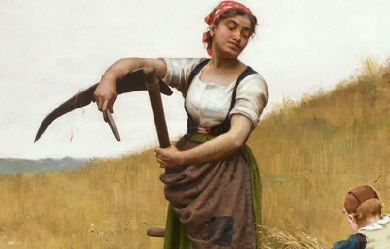
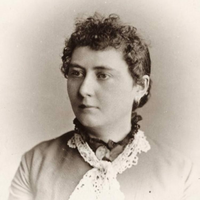
Isabella Valancy Crawford (25 December 1846– 12 February 1887) was an Irish-born Canadian writer and poet. She was one of the first Canadians to make a living as a freelance writer. “Crawford is increasingly being viewed as Canada’s first major poet.” She is the author of “Malcolm’s Katie,” a poem that has achieved “a central place in the canon of nineteenth-century Canadian poetry.” Life Isabella Valancy Crawford was the last surviving daughter of Dr. Stephen Crawford. She was born in Dublin, Ireland on Christmas Day, 1846. The family emigrated to Canada when she was ten years of age. Much of Isabella Crawford’s early life is unknown. By her own account she was born in Dublin, Ireland, the sixth daughter of Dr. Stephen Dennis Crawford and Sydney Scott; but “No record has been found of that marriage or of the birthdates and birthplaces of at least six children, of whom Isabella wrote that she was the sixth.” The family was in Canada by 1857; in that year, Dr. Crawford applied for a license to practice medicine in Paisley, Canada West. “In a few years, disease had taken nine of the twelve children, and a small medical practice had reduced the family to semi-poverty.” Dr. Crawford served as Treasurer of Paisley Township, but "a scandal of a missing $500 in misappropriated Township funds and the subsequent suicide of one of his bondsmen" caused the family to leave Paisley in 1861. By chance Dr. Crawford met Richard Strickland of Lakefield. Strickland invited the Crawfords to live at his home, out of charity, and because Lakefield did not have a doctor. There the family became acquainted with Strickland’s sisters, writers Susanna Moodie and Catherine Parr Traill. Isabella Crawford reportedly began writing at that time. She was also thought to be a close companion of Mrs. Traill’s daughter, Katharine (Katie). In 1869 the family moved to Peterborough, and Crawford began to write and publish poems and stories. Her first published poem, “A Vesper Star”, appeared in The Toronto Mail on Christmas Eve, 1873. "When Dr. Crawford died, on 3 July 1875, the three women"– Isabella, her mother, and her sister Emma, all who were left in the household– “became dependent on Isabella’s literary earnings.” After Emma died of tuberculosis, "Isabella and her mother moved in 1876 to Toronto, which was the centre of the publishing world in Canada.” “Although Isabella had been writing while still living in Lakefield... and had published poems in Toronto newspapers and stories in American magazines while living in Peterborough, when she moved to Toronto she turned her attention in earnest to the business of writing.” “During this productive period she contributed numerous serialized novels and novellas to New York and Toronto publications,” “including the Mail, the Globe, the National, and the Evening Telegram. She also contributed ”a quantity of 'occasional’ verse to the Toronto papers... and articles for the Fireside Monthly. In 1886 she became the first local writer to have a novel, A little Bacchante, serialized in the Evening Globe. In her lifetime Crawford published only one book, Old Spookses’ Pass, Malcolm’s Katie and Other Poems in 1884. It was privately printed and sold poorly. Crawford paid for the printing of 1,000 copies, and presumably sent out many review copies; “there were notices in such London journals as the Spectator, the Graphic, the Leisure Hour, and the Saturday Review. These articles pointed to ‘versatility of talent,’ and to such qualities as ‘humour, vivacity, and range of power,’ which were impressive and promising despite her extravagance of incident and ‘untrained magniloquence.’” However, only 50 books sold. “Crawford was understandably disappointed and felt she had been neglected by 'the High Priests of Canadian Periodical Literature’” (Arcturus 84).” Crawford died on 12 February 1887 in Toronto. She was buried in Peterborough’s Little Lake Cemetery near the Otonabee River. She had died in poverty and for years her body lay in an unmarked grave. A fundraising campaign was begun in 1899, and on 2 November 1900, a six-foot Celtic Cross was raised above her grave, inscribed: "Isabella Valancy Crawford / Poet / By the Gift of God.” Writing Crawford was a prolific writer. “For the most part Crawford’s prose followed the fashion of the feuilleton of the day.” Her magazine writing “displays a skilful and energetic use of literary conventions made popular by Dickens, such as twins and doubles, mysterious childhood disappearances, stony-hearted fathers, sacrificial daughters, wills and lost inheritances, recognition scenes, and, to quote one of her titles, 'A kingly restitution’.” As a whole, though, it “was romantic-Gothic ‘formula fiction.’” It is her poetry that has endured. Just two years after her death, W.D. Lighthall included generous selections from her book in his groundbreaking 1889 anthology, Songs of the Great Dominion, bringing it to a wider audience. “In the 20th century critics have given the work increasing respect and appreciation." "Crawford’s Collected Poems were edited (Toronto 1905) by J.W. Garvin, with an introduction by Ethelwyn Wetherald," a popular Canadian poet. Wetherald called Crawford “purely a genius, not a craftswoman, and a genius who has patience enough to be an artist.” In his 1916 anthology, Canadian Poets, Garvin stated that Crawford was “one of the greatest of women poets.” Poet Katherine Hale, Garvin’s wife, published a volume on Isabella Valancy Crawford in the 1920s Makers of Canada series. All of this helped Crawford’s poetry become more widely known. . A "serious critical assessment began in the mid-1940s with A.J.M. Smith, Northrop Frye, and E.K. Brown, who called her ‘the only Canadian woman poet of real importance in the last century.’" "Recognition of Isabella Valancy Crawford’s extraordinary mythopoeic power, and her structural use of images, came... in James Reaney’s lecture 'Isabella Valancy Crawford’ in Our living tradition (series 3, 1959)." Then a “renewed interest in Crawford resulted in the publication of forgotten manuscripts and critical articles” in the 1970s. "A reprint of the collected poems in 1972, with an introduction by poet James Reaney, made Crawford’s work generally available; six of her short stories, edited by Penny Petrone, appeared in 1975; and in 1977 the Borealis Press published a book of fairy stories and a long unfinished poem, ‘Hugh and Ion.’.” Crawford wrote a wide variety of poems, ranging from the Walter Scott-like doggerel (pun intended) of “Love Me, Love My Dog”, to the eerie mysticism of “The Camp of Souls” to the eroticism of The Lily Bed. But it is mainly Crawford’s "long narrative poems [that] have received particular attention." “Old Spookses’ Pass” is a dialect poem, set in the Rocky Mountains, concerning a dream vision of a midnight cattle stampede towards a black abyss that is stilled by a whirling lariat; “The helot” makes use of the Spartans’ practice of intoxicating their helots to teach their own children not to drink, as the starting-point for a highly incantatory and hypnotic poem that ends in Bacchic possession and death; and “Gisli the Chieftain” fuses mythic elements, such as the Russian spring goddess Lada and the Icelandic Brynhild, into a narrative of love, betrayal, murder, and reconciliation. These poems follow a pattern of depicting the world as a battleground of opposites– light and dark, good and evil– reconciled by sacrificial love.” Malcolm’s Katie The bulk of critical attention has gone to “Malcolm’s Katie.” That poem is a long narrative in blank verse, dealing mainly with the love and trials of young Max and Katie in the 19th-century Canadian bush, but containing a second running narrative recounting the war between the North and South Winds (Winter and Summer personified as First Nations warriors), and also a collection of love songs in different stanza forms. Many of those lauding the poem have seen their own interests reflected in it. For instance, socialist Livesay gave a reading that made the poem sound like a manifesto of Utopian socialism: Crawford presents a new myth of great significance to Canadian literature: the Canadian frontier as creating ‘the conditions for a new Eden,’ not a golden age or a millennium, but ‘a harmonious community, here and now.’ Crawford’s social consciousness and concern for humanity’s future committed her, far ahead of her time and milieu, to write passionate pleas for brotherhood, pacifism, and the preservation of a green world. Her deeply felt belief in a just society wherein men and women would have equal status in a world free from war, class hatred, and racial prejudice dominates all her finest poetry.” Others have similarly seen their concerns reflected in the poem. “Malcolm’s Katie has been given a nationalistic reading by Robin Mathews, a feminist reading by Clara Thomas, a biographical reading by Dorothy Farmiloe and a Marxian reading by Kenneth Hughes, as well as various literary-historical readings by Dorothy Livesay, Elizabeth Waterston, John Ower, Robert Alan Burns and others.” Not just interpretations on the poem’s meaning, but evaluations of its worth, have varied widely. Its detractors have included poet Louis Dudek, who called Crawford “'a failed poet’ of 'hollow convention... counterfeit feeling... and fake idealism’”; and Roy Daniells, who in The Literary History of Canada (1965) called “Malcolm’s Katie” “a preposterously romantic love story on a Tennysonian model in which a wildly creaking plot finally delivers true love safe and triumphant.” Some of the poem’s supporters concede the Tennyson influence but point out that there is much more to it: “While appearing on the surface melodramatic and stereotyped, Crawford’s love story is compelling and powerful; what seems at first a conventional conflict between rival suitors for the hand of the heroine becomes a serious, even profound, account of philosophical, social and ideological confrontations.” “In ‘Malcolm’s Katie’ Crawford adapted to the setting of pioneer Canada the domestic idyll as she learned it from Tennyson. Striking and new, however, is Crawford’s location of Max and Katie’s conventional love story within a context of Native legends—Indian Summer and the battle of the North and South Winds.” This myth telling (however accurate it was as a portrayal of First Nations beliefs) is what many of its supporters see as giving the poem its power. For instance, writing about “Malcolm’s Katie, critic Northrop Frye pronounced Crawford ”the most remarkable mythopoeic imagination in Canadian poetry": the “framework’ of Isabella Crawford is that of an intelligent and industrious female songbird of the kind who filled so many anthologies in the last century. Yet the ”South Wind" passage from Malcolm’s Katie is only the most famous example of the most remarkable mythopoeic imagination in Canadian poetry. She puts her myth in an Indian form, which reminds us of the resemblance between white and Indian legendary heroes in the New World, between Paul Bunyan and Davy Crockett on the one hand and Glooscap on the other. The white myths are not necessarily imitated from the Indian ones, but they may have sprung from an unconscious feeling that the primitive myth expressed the imaginative impact of the country as more artificial literature could never do.” Frye believed, and thought Crawford’s “poetic sense” told her, “that the most obvious development in the romantic landscape is toward the mythological”; and he saw Crawford’s attempt at an indigenous Canadian myth as the intellectual equivalent of the simultaneous pioneer exploration and settlement: “In the long mythopoeic passage from Isabella Crawford’s Malcolm’s Katie, beginning ‘The South Wind laid his moccasins aside,’ we see how the poet is, first, taming the landscape imaginatively, as settlement tames it physically, by animating the lifeless scene with humanized figures, and, second, integrating the literary tradition of the country by deliberately re-establishing the broken cultural link with Indian civilization.” Hugh and Ion Dorothy Livesay, researching Crawford’s life for the Dictionary of Canadian Biography in 1977, discovered the manuscript of an uncompleted narrative poem in the Crawford fonds at Kingston, Ontario’s Queen’s University. Called Hugh and Ion, it deals with "Hugh and Ion, two friends who have fled the noxious city—probably contemporary Toronto—for purification in the primal wilderness [and] carry on a sustained dialogue, Hugh arguing for hope, light, and redemption and Ion pointing out despair, darkness, and intractable human perversity." Perhaps due to Crawford’s Toronto experiences, this last poem marked a significant change in her views, showing the city as “a demonic, urban world of isolation and blindness which has wilfully cut itself off from the regenerative power of the wildernese. The confident innocence and romantic idealism, which account for much of the inner fire of Malcolm’s Katie, have simply ceased to be operative.... Nowhere else in nineteenth-century Canadian literature, with the exception of Lampman’s ”the End of Things", is there another example of the creative imagination being brought to bear, in so Blakean a manner, on the nascent social evils of the ‘infant city.’” Recognition Isabella Valancy Crawford was designated a Person of National Historic Significance in 1947. A small garden park in downtown Toronto, at Front and John Streets (near the CN Tower), has been named Isabella Valancy Crawford Park.
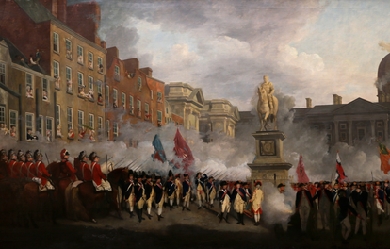
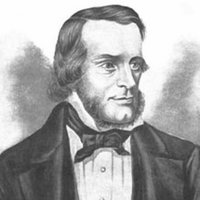
Thomas Osborne Davis (14 October 1814– 16 September 1845) was an Irish writer who was the chief organiser of the Young Ireland movement. He was born in the town of Mallow in County Cork, the son of a Welsh father, a surgeon in the Royal Artillery, and an Irish mother. Through his mother he was descended from the Gaelic noble family of O’Sullivan Beare. His father died one month after his birth and his mother moved to Warrington Place near Mount Street bridge in Dublin. In 1830, they moved to 67 Lower Baggot Street. He attended school in Lower Mount Street before studying in Trinity College, Dublin. He graduated in Law and received an Arts degree in 1836, before being called to the Irish Bar in 1838. To a large extent Davis created the culture of modern Irish nationalism.
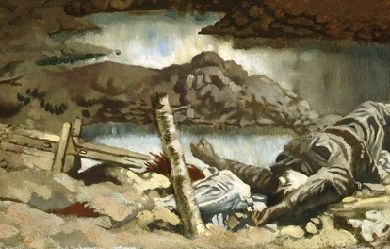
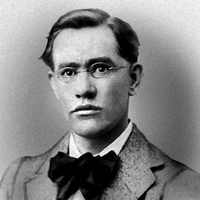
Francis Edward Ledwidge (19 August 1887– 31 July 1917) was an Irish war poet from County Meath. Sometimes known as the “poet of the blackbirds”, he was killed in action at the Battle of Passchendaele during World War I. Early life Ledwidge was born at Janeville, Slane, in Ireland, the eighth of nine children in a poverty-stricken family. His parents, Patrick Ledwidge (the Ledwidge family, from Shropshire, was granted land in Meath after the Norman invasion) and wife Anne Lynch (1853–1926), believed in giving their children the best education they could afford. But when Francis was only five his father Patrick died prematurely, which forced his wife and the children out to work at an early age. Francis left the local national school aged thirteen, and while he continued to educate himself, he worked at what work he could find, as farm hand, road mender and supervisor of roads, as copper miner (sacked for organising a strike for better mining conditions, three years before the general 1913 strike, and was a trade union activist since 1906) and shop assistant. Appointed secretary of the Slane branch of the Meath Labour Union (1913–14) he had aspirations of permanent white-collar work. He was known for his connections with Sinn Féin. Young poet Strongly built, with striking brown eyes and a sensuous face, Ledwidge was a keen poet, writing where ever he could– sometimes even on gates or fence posts. From the age of fourteen his works were published in his local newspaper, the Drogheda Independent reflecting his passion for the Boyne Valley. While working as a road labourer he won the patronage of the writer Lord Dunsany after writing to him in 1912, enclosing copybooks of his early work. Dunsany, a man of letters already well known in Dublin and London literary and dramatic circles, and whose own start in publishing had been with a few poems, promoted him in Dublin and introduced him to W.B. Yeats with whom he became acquainted. Dunsany supported Ledwidge with money and literary advice for some years, providing him with access to and a workspace in Dunsany Castle’s Library where he met the Irish writer Katharine Tynan, corresponding with her regularly. Dunsany later prepared his first collection of poetry Songs of the Fields, which successfully appealed to the expectations of the Irish Literary Revival and its social taste for rural poetry. Home Rule and World War I Ledwidge was a keen patriot and nationalist. His efforts to found a branch of the Gaelic League in Slane were thwarted by members of the local council. The area organiser encouraged him to continue his struggle, but Francis gave up. He did manage to act as a founding member with his brother Joseph of the Slane Branch of the Irish Volunteers (1914), a nationalist force created in response to the arming of the Ulster Volunteers who swore to resist the introduction of Home Rule for Ireland by force, if need be. The Irish Volunteers were set up to prevent their belligerence and to ensure democracy would prevail. On the outbreak of World War I in August 1914, and on account of Ireland’s involvement in the war, the Irish Volunteers split into two factions, the National Volunteers who supported John Redmond’s appeal to join Irish regiments in support of the Allied war cause and those who did not. Francis was originally of the latter party. Nevertheless, having defended this position strongly at a local council meeting, he enlisted (24 October 1914) in Lord Dunsany’s regiment, joining 5th battalion Royal Inniskilling Fusiliers, part of the 10th (Irish) Division. This was against the urgings of Dunsany who opposed his enlistment and had offered him a stipend to support him if he stayed away from the war. Some have speculated that he went to war because his sweetheart Ellie Vaughey had found a new lover, John O’Neill, whom she later married, but Ledwidge himself wrote, and forcefully, that he could not stand aside while others sought to defend Ireland’s freedom. Poetry and war Ledwidge seems to have fitted into Army life well, and rapidly achieved promotion to lance corporal. In 1915, he saw action at Suvla Bay in the Dardanelles, where he suffered severe rheumatism. Having survived huge losses sustained by his company in the Battle of Gallipoli, he became ill after a back injury on a tough mountain journey in Serbia (December 1915), a locale which inspired a number of poems. Ledwidge was dismayed by the news of the Easter Rising, and was court-martialled and demoted for overstaying his home leave and being drunk in uniform (May 1916). He gained and lost stripes over a period in Derry (he was a corporal when the introduction to his first book was written), and then, returned to the front, received back his lance corporal’s stripe one last time in January 1917 when posted to the Western Front, joining 1st Battalion, Royal Inniskilling Fusiliers, part of 29th Division. Ledwidge continued to write when feasible throughout the war years, though he lost much work, for example, in atrocious weather in Serbia. He sent much of his output to Lord Dunsany, himself moving on war assignments, as well as to readers among family, friends and literary contacts. On 31 July 1917, a group from Ledwidge’s battalion of the Royal Inniskilling Fusiliers were road-laying in preparation for an assault during the Third Battle of Ypres, near the village of Boezinge, northwest of Ieper (Ypres). While Ledwidge was drinking tea in a mud hole with his comrades, a shell exploded alongside, killing the poet and five others. A chaplain who knew him, Father Devas, arrived soon after, and recorded “Ledwidge killed, blown to bits.” The poems Ledwidge wrote on active service revealed his pride at being a soldier, as he believed, in the service of Ireland. He wondered whether he would find a soldier’s death. The dead were buried at Carrefour de Rose, and later re-interred in the nearby Artillery Wood Military Cemetery, Boezinge, (where the Welsh poet Hedd Wyn, killed on the same day, is also buried). A stone tablet commemorates him in the Island of Ireland Peace Park, Messines, Belgium. His work as “peasant poet” and “soldier poet”, once a standard part of the Irish school curriculum, faded from view for many decades of the 20th century. Its intensity, coupled with a revived interest in his period, has restored it to life. Publications and reception Much of Ledwidge’s work was published in newspapers and journals in Ireland and the UK. The only work published in book form during Ledwidge’s lifetime was the original Songs of the Fields (1915), which was very well received. The critic Edward Marsh printed three of the poems in the Georgian Poetry series, and remained a correspondent for the remainder of Ledwidge’s life. A second volume, Songs of Peace was in preparation when Ledwidge died; patron and friend Lord Dunsany wrote the introduction while both were in Derry in September 1916. Following the war, Dunsany arranged for more of Ledwidge’s work to be published, first in a third and final new volume, Last Songs, and then later in an anthology in 1919; he commented on the work with words such as: “[I was] astonished by the brilliance of that eye and that had looked at the fields of Meath and seen there all the simple birds and flowers, with a vividness which made those pages like a magnifying glass, through which one looked at familiar things for the first time.” Some of Ledwidge’s poetry was put to music by the British Composer and song-writer Michael Head, most notably in the very well received song cycle published in 1920, “Over the rim of the moon”. This includes the well-known song, “The Ships of Arcady”. Later collections: Alice Curtayne: ‘’The complete poems of Francis Ledwidge’’ (1974) who also wrote a comprehensive biography of the poet, including some previously unpublished work Liam O’Meara: ‘’The poems of Francis Ledwidge’’ (1997), (ISBN 1 870 49147 5), including some previously unpublished work Ulick O’Connor (introduction by): ‘’The best of Francis Ledwidge’’, The Inchicore Ledwidge Society, Risposte Books (2004), ISBN 1-901596-10-9 Hubert Dunn:‘’The Minstrel Boy’’, (2006) some more poems released in a commemorative volume Dermot Bolger: In 1992 long-time Ledwidge admirer, Dublin poet Dermot Bolger, published a Selected Poems of Francis Ledwidge. This was re-issued by New Island Books in 2007 under the title “A Ledwidge Treasury”, with an introduction by Seamus Heaney and an afterword by Dermot Bolger. In 2007 Bolger’s play about the life of Ledwidge, “Walking the Road”, (New Island Books, 2007) was staged in Dublin and in the Town Hall Theatre, Ieper, close where Ledwidge died. It was commissioned to mark the 90th anniversary of his death. In 1998 Bolger and the poet’s nephew, Joseph Ledwidge, were invited by the 'In Flanders Fields Museum’ to unveil a monument on the spot where Ledwidge was killed. Politics His politics are described by the Oxford Dictionary of National Biography as nationalist as well as left-wing. However far from simply being an Irish Nationalist, his poems “O’Connell Street” and "Lament for the Poets of 1916" clearly describe his sense of loss and an expression of holding the same “dreams” as the Easter Rising’s Irish Republicans who fought and died for the Irish Republic in and around O’Connell Street in 1916. Works * Songs of the Fields (1915) Full text at Internet Archive * Songs of Peace (1917) Full text at Internet Archive * Last Songs (1918) Full text at Internet Archive * The complete poems of Francis Ledwidge; with introductions by Lord Dunsany (1919) Full text at Internet Archive Quotes * Oh what a pleasant world 'twould be, * How easy we’d step thro’ it, * If all the fools who meant no harm, * Could manage not to do it! *– From a personal letter. * He shall not hear the bittern cry * in the wild sky, where he is lain, * Nor voices of the sweeter birds * Above the wailing of the rain * * Nor shall he know when the loud March blows * Thro’ slanting snows her fanfare shrill, * Blowing to flame the golden cup * Of many an upset daffodil. * * But when the dark cow leaves the moor * And pastures poor with greedy weeds * Perhaps he’ll hear her low at morn * Lifting her horn in pleasant meads. *– Lament for Thomas MacDonagh Documentary film * Ledwidge was the subject of an RTÉ documentary entitled Behind the Closed Eye, first broadcast on 18 January 1973. It won awards for Best Story and Best Implementation Documentary at the Golden Prague International Television Festival. References Wikipedia—https://en.wikipedia.org/wiki/Francis_Ledwidge
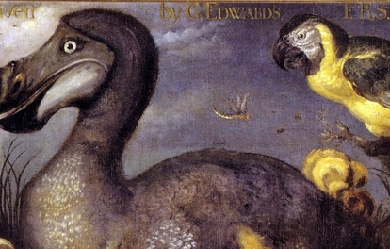
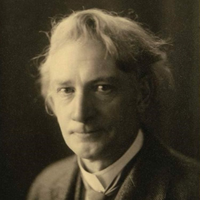
David McKee Wright (6 August 1869– 5 February 1928) was an Irish-born poet and journalist, active in New Zealand and Australia. Early life Wright was born at Ballynaskeagh, County Down, Ireland, the second son of Rev. William Wright, D.D. (1837-1899), a Congregational missionary working in Damascus, scholar and author, and his wife Ann (d.1877), née McKee, daughter of the Rev. David McKee, an educationist and author. David Wright was born while his parents were home on furlough and was left with a grandmother (Rebecca McKee) until he was seven years old. Wright was educated at the local Glascar School and then from 1876 in England at Mr Pope’s School and the Crystal Palace School of Engineering, London. New Zealand Wright migrated to New Zealand in 1887 and spent several years as a rabbiter on stations in Central Otago. During this time he wrote in both prose and verse for major provincial newspapers about station life. He studied for the Congregational ministry and Wright studied divinity from 1896 at the University of Otago. Wright had done a lot of private reading, but found that apart from English his education was generally below that of the other students. In 1897 Wright was awarded a Stuart prize for poetry. Wright published four volumes of ballads, Aorangi and other Verses (1896), Station Ballads and other Verses (1897), Wisps of Tussock (1900), and New Zealand Chimes (1900). As a clergyman Wright was liked, but he found the work uncongenial and gave it up for journalism in which he had considerable experience in New Zealand. Wright married Elizabeth Couper at Dunedin on 3 August 1899; a son David was born in 1900, but the marriage failed. Wright joined the New Zealand Mail as parliamentary reporter in 1907. Australia Wright moved to Sydney in 1910 and did a large amount of successful freelance work for the Sun, The Bulletin, and other papers. Wright was editor of the Red Page of The Bulletin 1916–1926 and encouraged many of the rising writers of the time, and continued to do a large amount of writing himself in both prose and verse. Much of this appeared over pen-names such as “Pat O’Maori” and “Mary McCommonwealth” and much was signed with his initials. As Wright grew older his mind turned more and more to the country of his birth, he published his most important volume, An Irish Heart (1918). In 1920 he was awarded the prize for the best poem in commemoration of the visit of the Prince of Wales, and in the same year the Rupert Brooke memorial prize for a long poem, “Gallipoli”. Neither of these poems has been published in book form. From 1912-18 Wright lived with the writer 'Margaret Fane’ (Beatrice Florence Osborne, 1887-1962) in Sydney; they had four sons. From 1918 Wright lived with Zora Cross in Greeanawn, Glenbrook, Blue Mountains. He died there on 5 February 1928. The couple had two daughters, Davidina Wright and April McKee Wright (also known as April Hersey), who went on to write at least one wartime thriller. Legacy Wright was a friend of Christopher Brennan, Randolph Bedford, Frank Morton and Henry Lawson. Though much of a Bohemian, something of the clergyman still clung to him. Zora Cross, in An Introduction to the Study of Australian Literature, gave him a high position among Australian poets. Charming though An Irish Heart may be, it is too derivative to be work of the highest kind. It is not a question of individual words or phrases, but rather of a man steeping himself in the modern Irish school of poetry, and with all the skill of his practised craftsmanship reproducing its spirit in another land. A large amount of his work, including some short plays, has never been collected. References Wikipedia—https://en.wikipedia.org/wiki/David_McKee_Wright
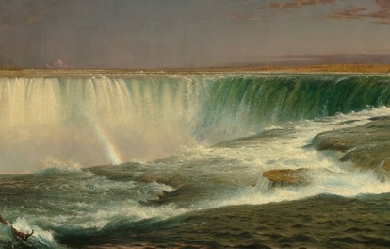
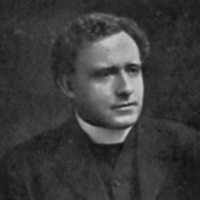
Rev. James Bernard Dollard ("Father Dollard") (1872–1946) was a Roman Catholic parish priest and noted poet. Life He was born at Mooncoin, County Kilkenny, Ireland, August 30, 1872, to Michael and Anastasia (Quinn) Dollard, the youngest son in a large family. After taking the course in Classics at Kilkenny College, he sailed in 1890 for New Brunswick, Canada. He graduated from the Grand Seminary of Montreal and received from Laval University the degrees of Bachelor of Theology and Bachelor of Canon Law. The same university conferred on him in 1916, the honorary degree of Litt.D. He was ordained to the priesthood in December 1896. He served as a curate in St. Helen’s Church, and St. Mary’s Church, Toronto, and for nine years, parish priest of Uptergrove, Ontario before he became the parish priest of St. Monica’s Church, North Toronto. He published two volumes of poems Irish Mist and Sunshine (1902) and Poems (1910), and a volume of short stories entitled The Gaels of Moondharrig. He sometimes wrote under the pseudonym of Sliav-na-mon. In a lecture on “The War and the Poets,” delivered in Toronto, 1916, Mr. Joyce Kilmer, poetry editor of the Literary Digest, declared that Father Dollard’s sonnet was the best poem that had appeared on the death of Rupert Brooke. He died in 1946. References Wikipedia—https://en.wikipedia.org/wiki/James_B._Dollard
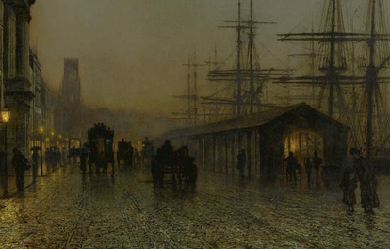
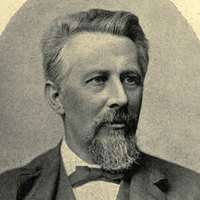
Edward Dowden (/ˈdaʊdən/; 3 May 1843– 4 April 1913), was an Irish critic and poet. Biography He was the son of John Wheeler Dowden, a merchant and landowner, and was born at Cork, three years after his brother John, who became Bishop of Edinburgh in 1886. Edward’s literary tastes emerged early, in a series of essays written at the age of twelve. His home education continued at Queen’s College, Cork and at Trinity College, Dublin; at the latter he had a distinguished career, becoming president of the Philosophical Society, and winning the vice-chancellor’s prize for English verse and prose, and the first senior moderatorship in ethics and logic. In 1867 he was elected professor of oratory and English literature in Dublin University. Dowden’s first book, Shakespeare, his Mind and Art (1875), resulted from a revision of a course of lectures, and made him widely known as a critic: translations appeared in German and Russian; his Poems (1876) went into a second edition. His Shakespeare Primer (1877) was translated into Italian and German. In 1878 the Royal Irish Academy awarded him the Cunningham gold medal “for his literary writings, especially in the field of Shakespearian criticism.” Later works by him in this field included an edition of The Sonnets of William Shakespeare (1881), Passionate Pilgrim (1883), Introduction to Shakespeare (1893), Hamlet (1899), Romeo and Juliet (1900), Cymbeline (1903), and an article entitled “Shakespeare as a Man of Science” (in the National Review, July 1902), which criticized T.E. Webb’s Mystery of William Shakespeare. His critical essays “Studies in Literature” (1878), “Transcripts and Studies” (1888), “New Studies in Literature” (1895) showed a profound knowledge of the currents and tendencies of thought in various ages and countries; but his Life of Shelley (1886) made him best known to the public at large. In 1900 he edited an edition of Shelley’s works. Other books by him which indicate his interests in literature include: Robert Southey (in the “English Men of Letters” series, 1880), his edition of Southey’s Correspondence with Caroline Bowles (1881), and Select Poems of Southey (1895), his Correspondence of Sir Henry Taylor (1888), his edition of Wordsworth’s Poetical Works (1892) and of his Lyrical Ballads (1890), his French Revolution and English Literature (1897; lectures given at Princeton University in 1896), History of French Literature (1897), Puritan and Anglican (1900), Robert Browning (1904) and Michel de Montaigne (1905). His devotion to Goethe led to his succeeding Max Müller in 1888 as president of the English Goethe Society. In 1889 he gave the first annual Taylorian Lecture at the University of Oxford, and from 1892 to 1896 served as Clark lecturer at Trinity College, Cambridge. To his research are due, among other matters of literary interest, the first account of Thomas Carlyle’s Lectures on periods of European culture; the identification of Shelley as the author of a review (in The Critical Review of December 1814) of a lost romance by James Hogg; a description of Shelley’s Philosophical View of Reform; a manuscript diary of Fabre d’Églantine; and a record by Dr Wilhelm Weissenborn of Goethe’s last days and death. He also discovered a Narrative of a Prisoner of War under Napoleon (published in Blackwood’s Magazine), an unknown pamphlet by Bishop Berkeley, some unpublished writings of William Hayley relating to Cowper, and a unique copy of the Tales of Terror. His wide interests and scholarly methods made his influence on criticism both sound and stimulating, and his own ideals are well described in his essay on The Interpretation of Literature in his Transcripts and Studies. As commissioner of education in Ireland (1896–1901), trustee of the National Library of Ireland, secretary of the Irish Liberal Union and vice-president of the Irish Unionist Alliance, he enforced his view that literature should not be divorced from practical life. His biographical/critical concepts, particularly in connection with Shakespeare, are played with by Stephen Dedalus in the library chapter of James Joyce’s Ulysses. Leslie Fiedler was to play with them again in The Stranger in Shakespeare. Dowden married twice, first (1866) Mary Clerke, and secondly (1895) Elizabeth Dickinson West, daughter of the dean of St Patrick’s. His daughter by his first wife, Hester Dowden, was a well-known spiritualist medium. References Wikipedia—https://en.wikipedia.org/wiki/Edward_Dowden

Denis Florence MacCarthy (1817–1882) was an Irish poet, translator, and biographer, born in Lower O’Connell Street, Dublin. Life MacCarthy was born in Lower O’Connell Street, Dublin, on 26 May 1817, and educated there and at St Patrick’s College, Maynooth. He acquired an intimate knowledge of Spanish from a learned priest, who had spent much time in Spain, which he was later to turn to good advantage. In April 1834, before turning seventeen, MacCarthy contributed his first verses to the Dublin Satirist. He was one of a coterie of writers whose works appeared in the Nation, which had been started by Charles Gavan Duffy in 1842. Writing under the pseudonym “Desmond”, most of MacCarthy’s patriotic verse appeared in this organ. In 1846 he was called to the Irish bar, but never practised. In the same year he edited The Poets and Dramatists of Ireland, which he prefaced with an essay on the early history and religion of his countrymen. About this time he also edited The Book of Irish Ballads (by various authors), with an introductory essay on ballad poetry in general. His Ballads, Poems, and Lyrics, appeared in 1850, original and translated. His attention was first directed to Pedro Calderón de la Barca by a passage in one of Percy Bysshe Shelley’s essays, and from then on the interpretation of the “Spanish Shakespeare” claimed the greater part of his attention. The first volume of his translations, containing six plays, appeared in 1853, and was followed by further instalments in 1861, 1867, 1870, and 1873. His version of Daybreak in Capacabana was completed only a few months before his death. Until 1864 he resided principally on Killiney Hill, overlooking Dublin Bay. The delicate health of some members of his family then rendered a change of climate imperative, and he paid a prolonged visit to continental Europe. On his return MacCarthy settled in London, where he published– in addition to his translations– Shelley’s Early Life, which contains an account of that poet’s visit to Dublin in 1812. MacCarthy had already resettled in his native land of Ireland for some months, when he died on Good Friday, 1882 at Blackrock, Dublin. His poetical gifts were inherited by his daughter, who became a nun, and wrote as Sister Mary Stanislaus. His poems are distinguished by a sense of harmony and sympathy with natural beauty. Such poems as “The Bridal of the Year,” “Summer Longings” (alias “Waiting for the May”), and his long narrative poem, “The Voyage of St. Brendan,” are among his most enduring works. The last-mentioned, which paraphrases the “Ave Maria Stella” as the evening song of the sailors, is also marked by the earnest religious feeling which marked its author throughout life. But it is by his version of Calderon that he is considered to have won a permanent place in English letters. His success is sufficiently testified by George Ticknor, who declared in his History of Spanish Literature that MacCarthy "has succeeded in giving a faithful idea of what is grandest and most effective in [Calderon’s] genius... to a degree which I had previously thought impossible. Nothing, I think, in the English language will give us so true an impression of what is most characteristic of the Spanish drama, and of Spanish poetry generally.” Published works Below are lists of his published works, some of which are available on-line at Project Gutenberg (see Online works below). Poetry Poems Published in Dublin by M. H. Gill and Son in 1882 An extensive collection edited by the poet’s son. The Book of Irish Ballads Published in Dublin by James Duffy in 1846, revised in 1869. Ballads, Poems, and Lyrics, Original and Translated Published in Dublin by James McGlashan in 1850. The Bell-Founder, And Other Poems Published in London by David Bogue in 1857. Underglimpses, And Other Poems Published in London by David Bogue in 1857. Irish Legends And Lyrics Published in Dublin by McGlashan & Gill in 1858. Poems of Denis F. McCarthy [sic], with Life and Notes Published in Dublin and Cork by The Educational Company, Ltd., no date. Drama Dramas of Calderon, Tragic, Comic, and Legendary Published in London by Charles Dolman in 1853. Containing “The Constant Prince” ("El Principe Constante"), “The Secret in Words” ("El Secreto a Voces"), “The Physician of His own Honour” ("El Medico de Su Honra"), “Love after Death” ("Amar despues de la Muerte"), “The Purgatory of Saint Patrick” ("El Purgatorio de San Patricio"), and “The Scarf and the Flower” ("La Banda y la Flor"). Rebound with a foreword in 1886 for the Memorial Fund Committee. Love the Greatest Enchantment: The Sorceries of Sin: The Devotion of the Cross Published in London by Longtan, Green, Longman and Roberts in 1861. Containing (with original language texts) “El Mayor Encanto Amor, Los Encantos de la Culpa” (an “Auto Sacramental”), and “La Devocion de la Cruz.” Mysteries of Corpus Christi Published in Dublin by James Duffy in 1867. Containing “Balshazza’s Feast” ("La Cena de Balthasar") and “The Divine Philothea” ("La Divina Filotea"), two “Auto Sacramentales.” The Two Lovers of Heaven: Chrysanthus and Daria Published in Dublin by John F. Fowler in 1870. Containing Los dos amantes del cielo: Crisanto y Daria. Calderon’s Dramas Published in London by Henry S. King in 1873. Containing “Life is a Dream” ("La Vida es Sueño"), “The Wonder-Working Magician” ("El Magico Prodigioso"), and a new edition of “The Purgatory of St. Patrick” ("Purgatorio de San Patricio"). Daybreak at Capacabana (La Aurora en Copacabana) was completed shortly before the translator’s death. Biography The Poets and Dramatists of Ireland Published in Dublin by James Duffy in 1846. Shelley’s Early Life Published in London by John Camden Hotten in 1872. References Wikipedia—https://en.wikipedia.org/wiki/Denis_Florence_MacCarthy


